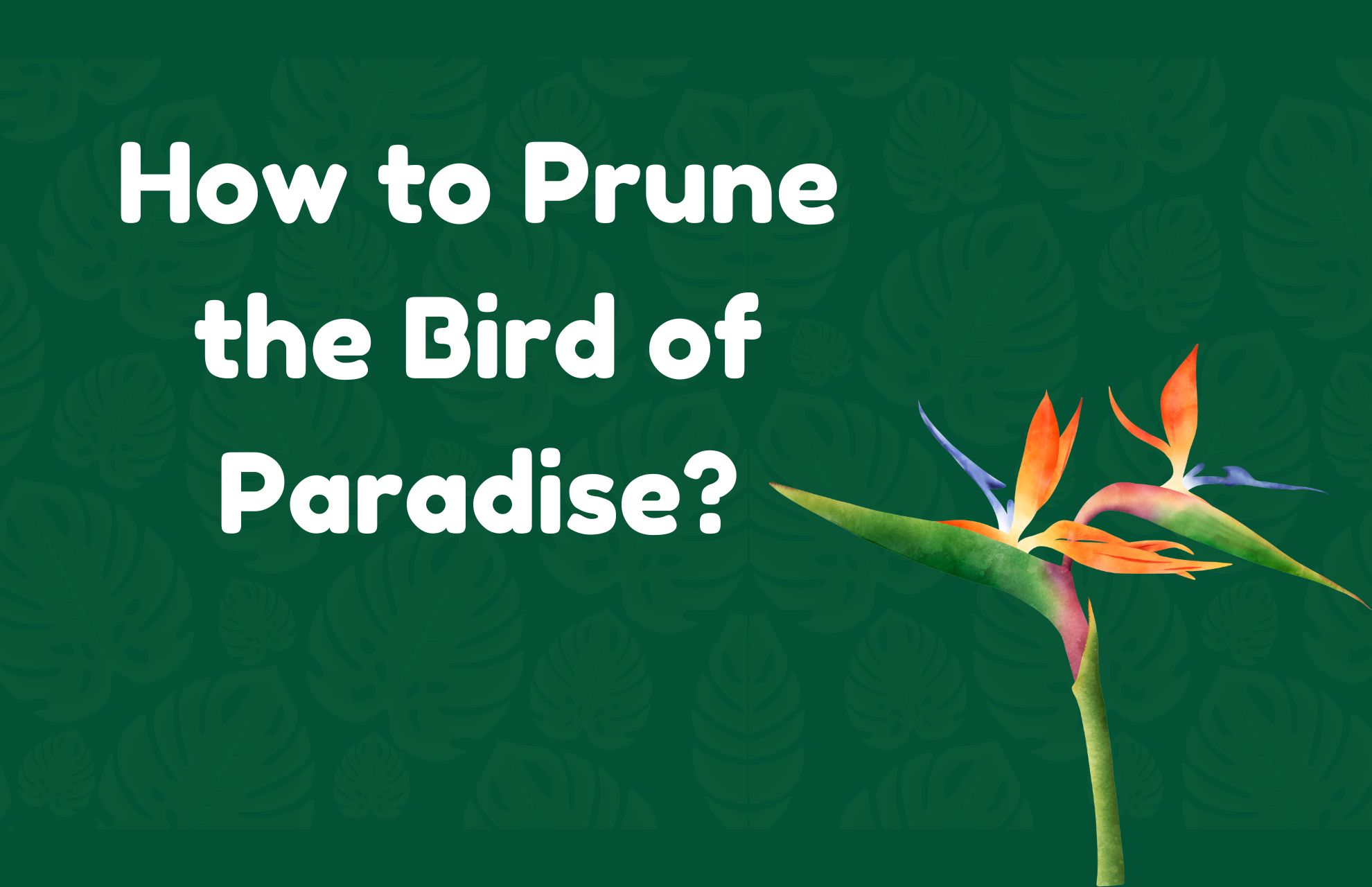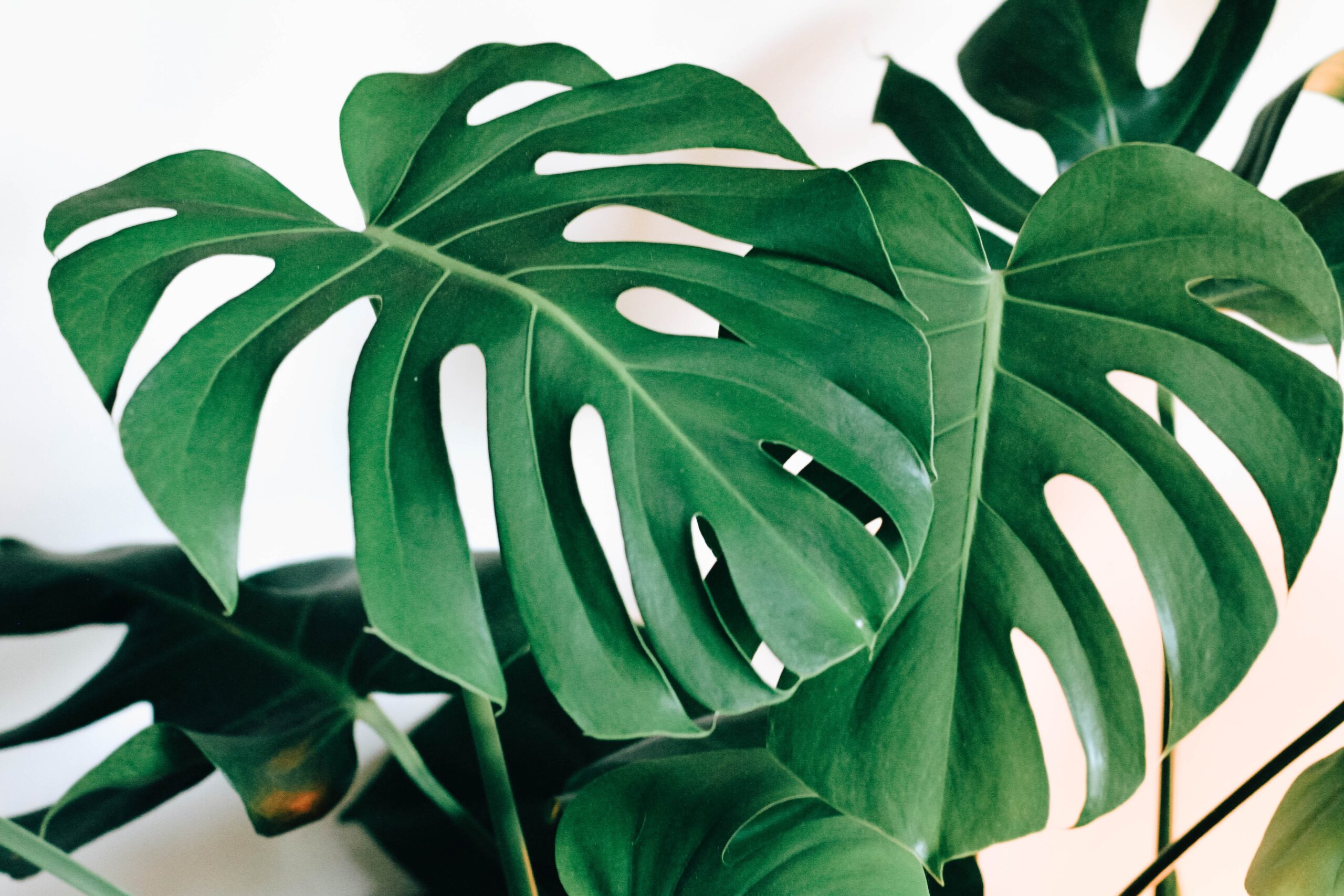Do not worry if you do not know how to prune the bird of paradise. The purpose, nature, timing, and method of pruning these plants are all covered in this manual.
Bird of Paradise can quickly transform a space into a tropical haven thanks to its large flowers and 18-inch-long leaves. However, many gardeners are hesitant to prune these plants because they are prized for their size and beauty because they worry that doing so will harm the foliage.
The good news is that pruning your Bird of Paradise can be a simple and safe way to support its growth and health.
Approximately one foot above the ground, prune taller bird of paradise stems. Use shears to trim the brief outgrowths beneath the branch. With a shovel, remove the clumps and transplant them. Clean the area around the plant after trimming the sturdy foliage with shears.
So let’s get into the specifics of how to prune Bird of Paradise correctly.
Read More: Bird Of Paradise Propagate: Cuttings & Seeds
How to Prune a Bird of Paradise?
The bird of paradise plant grows broad leaves and flowers, and it can become too thick to form clumps, which interferes with nearby plants. To make the plant look as good as it did before, pruning is required to get rid of the overgrown, outdated, damaged, and diseased parts.
Specific pruning times apply to the various birds of paradise varieties. Pruning is most productive for Mexican and yellow birds of paradise in late winter or early spring, following the threat of frost.
In the meantime, early spring and mid-summer pruning are beneficial for red species. 6 to 12 inches off the ground is the ideal height to cut them.
Use a pruning saw, loppers, and hand pruners to prune the strelitzia plant. The leaves or other plant parts may be torn by blunt objects, which makes them vulnerable to infections. To prevent introducing fungi or other diseases into the plants or removing them from the plants, use clean tools. After a couple of cuts, rub them with ethanol or isopropyl alcohol.
To protect yourself, dress in sturdy hand gloves and clothing.
The procedure for pruning the flowers, removing oversized or damaged leaves, and thinning out overgrown birds of paradise plants is detailed below.
Pruning the Dead Flowers
For an established strelitzia plant that has bloomed for at least three years, cutting damaged and faded flowers is advised. During the summer, birds of paradise typically bloom for two to three weeks before losing their petals, fading, or turning brown and dying.
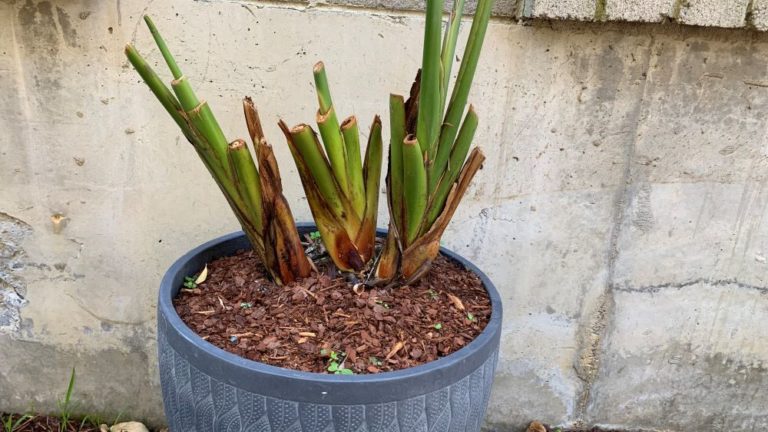
When the flowers have withered, prune. To make the remaining flowers last longer, you can cut them earlier when at least two have started to fade and fall.
The stem from which the bird of paradise flowers grows can rot and turn brown after the flowers have faded and died. Follow the branch from which each dead flower is held, and cut off a length that is just long enough to leave a small portion at the ground level. The stem won’t rot after the flower is removed, keeping the plant tidy.
Pruning Oversized and Damaged Foliages
The strelitzia plant has broad, glossy leaves that resemble banana tree leaves. When grown as a houseplant, the leaves occasionally have a tendency to expand outward and take up more space, blocking your windows or doors.
Following the flowering period, the leaves also turn brown and eventually die. They rot after that and spread fungus to the rest of the plant. To maintain the desired size and stop them from rotting, the large and damaged leaves must be pruned.
To completely remove all of the damaged leaves, use your pruning saw. Instead, remove the decayed leaves with your hands. Using a set of tidy pruning shears, cut large leaves to the desired size. Over 50% of the time, spare leaves are useful.
Thin the Overcrowded Growth and Cut Back the Plant
The leaves and stems of an overgrown bird of paradise plant are tangled and crowded. Your garden or yard will look messy as the plant and its undergrowth spread out up to 5 feet around the branches below.
The thick stems and foliage of the overgrown bird of paradise plant prevent the plants at the center from receiving light and air. To allow for the passage of these necessary components and keep the plant fungus-free, they must be thinned.
- Clear the small growths on the ground and beneath the stems to begin thinning out the crowded plant.
- Pruning shears are used to trim their edges as you move steadily and circumferentially toward the center.
- To get rid of the rootball, plow the ground around their roots. To carefully dig out the deepest roots, slowly push your shovel into the soil until it reaches them. Take care not to harm the roots.
- Afterward, prepare the removed shoots with roots and divide them to transplant them to the other parts of your yard.
- Use a pruning saw to trim the plant’s stems to about one foot above the ground if it is taller than the desired height. Starting at the outside and working your way inside, begin pruning the branches.
- The next step is to remove the dense foliage to make room for new growth.
After one to two blooming seasons, thinning out an overgrown and crowded bird of paradise plant clears the area and enables new growth. Read More: How to Care for the Bird of Paradise?
Maintain the thinned plant by providing it with adequate watering and a liquid fertilizer during the active growth phase to encourage it to grow and bloom once more. Read More: How To Choose The Bird Of Paradise Fertilizer?
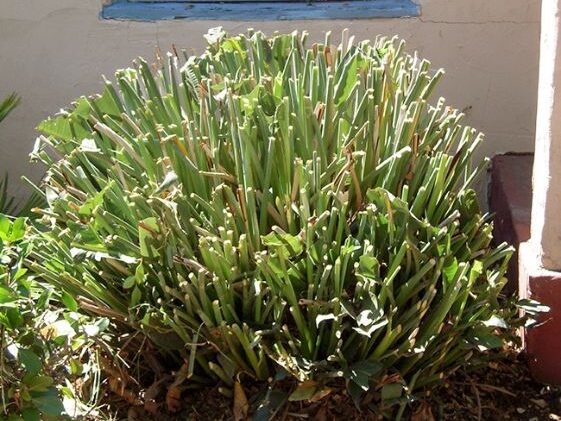
Does a Bird of Paradise Need to Be Pruned?
The short answer to this question is “yes!” In reality, pruning is necessary for almost all plants, from cacti to roses. However, a plant’s tolerance for pruning and your reasons for pruning will probably differ.
Bird of Paradise is a tropical plant native to South Africa that, even when grown inside, can reach extremely large sizes. Bird of Paradise is an evergreen plant, in contrast to many of the houseplants you have grown, which probably had many leaves that they regularly shed.
Although the word “evergreen” may conjure up images of pine trees, there are actually many other types of evergreen plants that do well in various climatic conditions. The leaves of tropical evergreens, such as palm trees, typically have fewer and grow more slowly. These leaves typically hang on to the plant for several months, and occasionally for years.
During the growing season, a Bird of Paradise will typically produce up to one leaf per month. Even though the Bird of Paradise has fewer leaves overall, every leaf is still vital to photosynthesis, which is how plants turn light into energy.
As a result, Bird of Paradise plants cannot be pruned as liberally as some other plant species because a decrease in leaves can significantly lower their capacity to absorb light.
This is not to say that you shouldn’t prune your Bird of Paradise, just that you should do it carefully to make the best decisions for the health and appearance of your plant.
Read More: Why Is Your Bird Of Paradise Leaves Curling?
Why Do You Need to Prune Bird of Paradise?
The bird of paradise requires regular pruning as part of its upkeep. The following are the primary reasons for performing this procedure:
- Both faster growth and regeneration are needed for the plant.
- The requirement for regular sanitation practices
- to give the top of the plant the shape you want.
- procedure for renewing expired leaves.
Over time, the branches grow very long and the old leaves wither and drop off. The plant looks neglected in addition to being ugly. For it to grow and develop quickly while regaining its beauty, pruning is necessary.
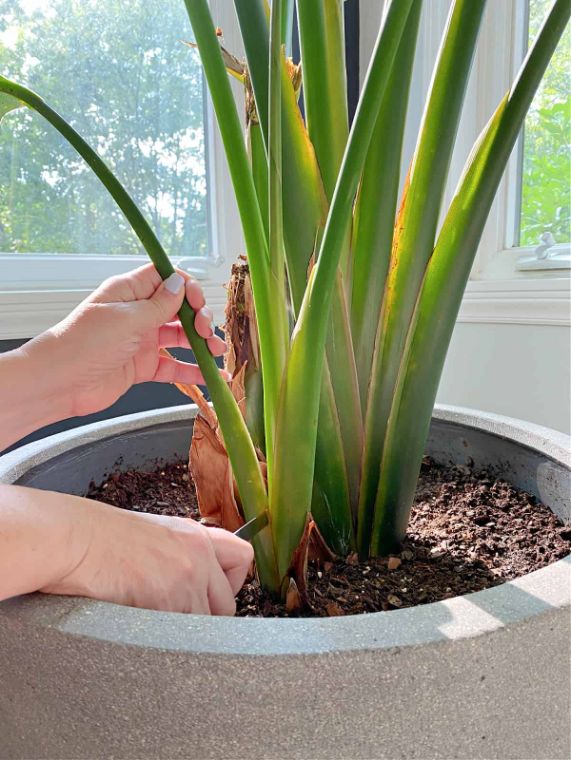
The removal of dead or damaged branches is necessary for sanitary pruning to prevent the growth of fungus on the plant’s leaves and stems. A new shoot’s rapid growth is sparked by this drastic intervention. After that, the bird of paradise continues to be attractive for several more years.
When to Prune a Bird of Paradise?
Despite the fact that it is always acceptable to remove a yellowing or damaged leaf, knowing when your Bird of Paradise is in its growing season is one of the most crucial considerations before you undertake any significant pruning.
Why, then, is this significant? Every plant has a season during which it produces the majority of its annual growth, and for many plants, including Bird of Paradise, this time spans from spring to fall. The plant uses this time to absorb as much solar energy as possible, which it then uses to grow new leaves and flowers.
As the temperatures begin to cool and the days grow shorter, these plants enter a period called “dormancy,” which is similar to hibernation. During the dormant season, plants will slow their growth so they can concentrate on maintaining the health of their roots and storing up nutrients for the upcoming winter.
Plants are less able to adapt to environmental changes or any harm to their leaves and stems during this period of slower growth. If possible, wait to prune your Bird of Paradise until the spring because it will be better able to recover from the stress that pruning causes.
How Often Should You Prune Birds of Paradise?
Depending on the plant’s rate of growth, prune the bird of paradise after a few years. When the plant has bloomed for at least three years, prune it hard for the first time. After the plant has grown out of control over the following few years, prune it a second time.
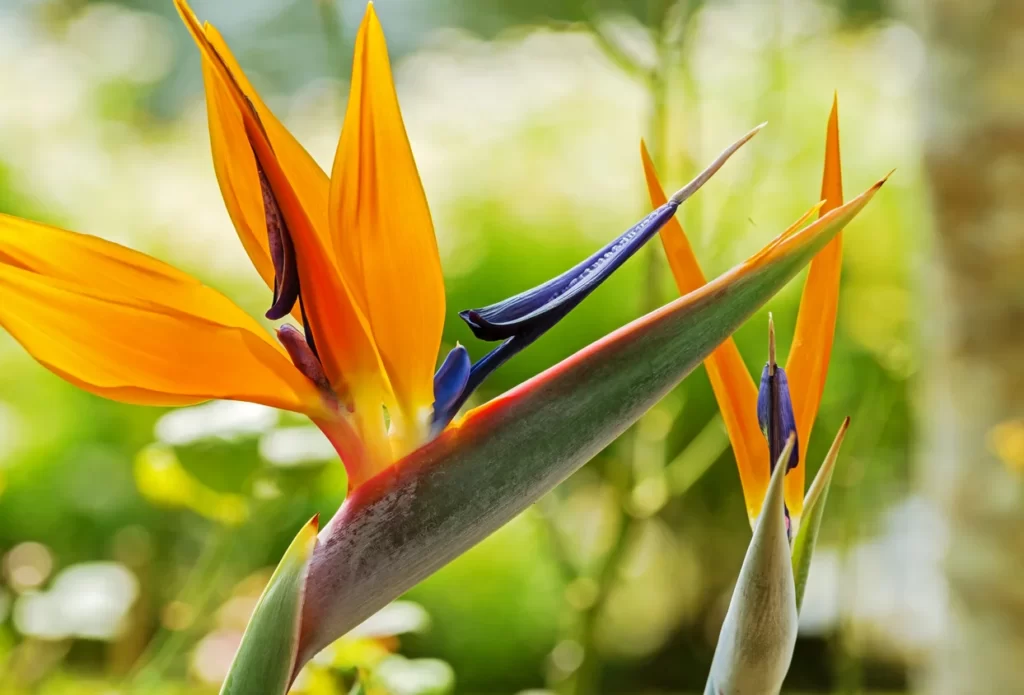
How to Trim Bird of Paradise?
In order to start, let’s step back and consider a few things. A bird of paradise will suffer if it is pruned. But in order to perform this activity, certain safety measures must be taken. The healing process can be challenging, if not impossible if you cut the plant incorrectly.
Although the cut may serve as a point of entry for bacteria, fungi, and other pests that could endanger the plant’s life, the plant’s growth might even be impacted. To prevent these negative effects, all you need to know is how to prune thoroughly.
- Determining the Needs of Your Bird of Paradise
- Check That The Time Is Right To Prune The Plants
- Make Use of The Appropriate Tools
- Know the types of pruning to prune Bird of Paradise Correctly
- Try To Inflict As Little Harm As Possible On The Plant
- Keep A Log of Your Pruning Activities
- Taking Care After Cutting Is Just As Important As Knowing How To Prun Correctly
Conclusion: a Pruned Bird of Paradise
Old, broken, split, or spotted leaves are the focus of routine pruning or cutting back. While giving them enough time to recover in the spring and summer, timely pruning of the leaves in the early spring keeps them small.
Knowing how to prune a bird of paradise will enable you to improve the appearance of these plants. Do not worry if you accidentally cut the wrong place. The wonder of plants is that they frequently regenerate.

